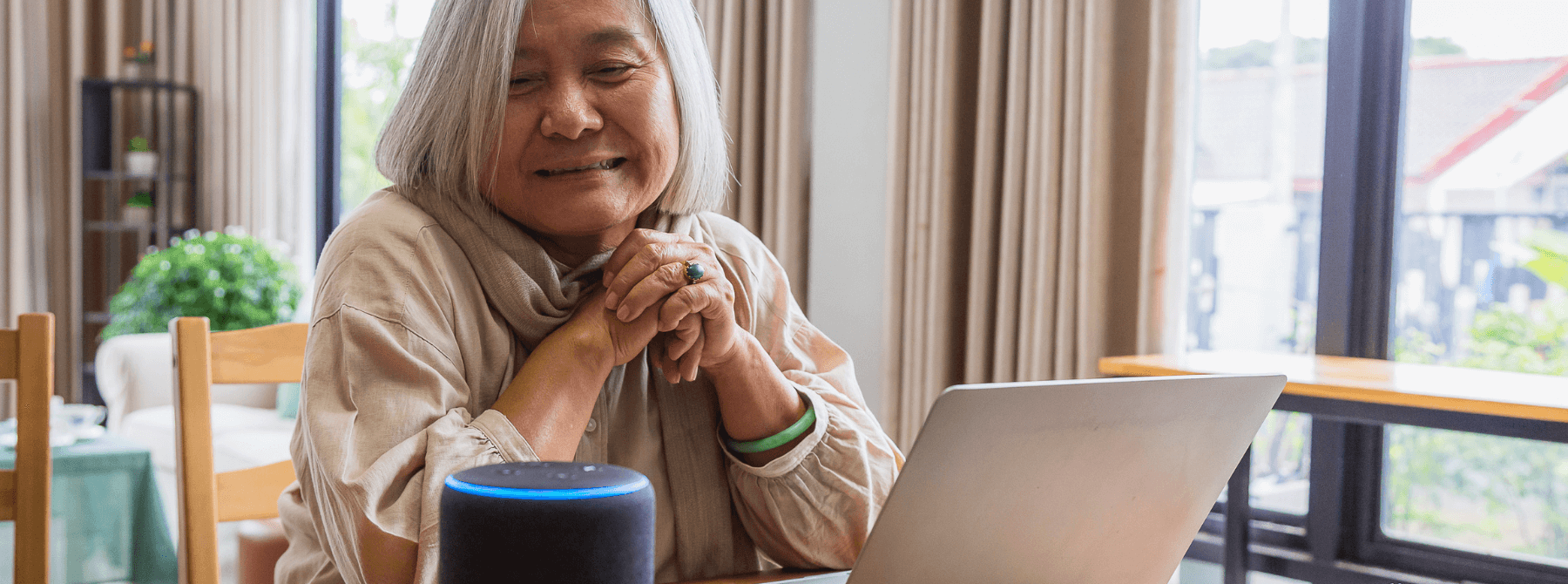
Cultivating Connection: Understanding the Evolving Needs of Your Customers from Afar
Understanding why people do the things they do, both explicitly and implicitly, is the crux of human-centered design and problem solving. Prior to the pandemic, it was easier for us to create continual, unbiased connections to the people we’re designing for without the spatial limitations we face today. While it’s currently trickier or impossible to ‘be there’ with customers to conduct in-person interviews, workshops or contextual inquiry, by no means does this mean we put on the breaks of research.


In a recent article, Power the Pivot: How to Innovate with Research and Strategy, I discussed how research can act as a vehicle of risk reduction to help companies navigate during this time of rapid change. This perspective persists as we move deeper into the pandemic. Its cascading effects continue to shape consumers' behaviors, goals, and needs, i.e. people will continue to need different things than normal and do things differently for the foreseeable future—transforming customer behaviors as we once knew them. In return, businesses need to remain informed about their customers evolving needs and hypervigilant to respond quickly as the future unfolds.
At Rightpoint, we’re no exception. We’ve adapted our methodologies and toolkit to have the finger on the pulse of consumer and market trends during the remote work era. Today, we’ll discuss different key research methods we’ve applied for a number of clients recently and wrap up with a few considerations before deciding what could work best to remain connected to your customers!
A Tried and True Remote Research Toolkit
1. Remote Diary Studies
Diary studies are essentially remote ethnographic research where respondents document and report their experiences (including behaviors, attitudes, and activities) over a period of time through a combination of mediums like surveys, photos, videos, screen recordings, and text. This is a particularly impactful way to receive organic behavioral insights when we want to understand a person’s habits, how they use or engage with brands, attitudes and motivations, or (in this case) most importantly, changes in their behavior and perception. This type of methodology yields a ton of invaluable real-time data on consumers' lives.
2. User-Focused Workshops
We’ve transformed workshops that we love to facilitate in-person into online-accessible, lean formats for a rapid assessment of end-users changing needs and experiences. Not only does this update existing consumer-related assets such as personas, but it also helps to identify opportunities for your company’s product or service offerings at this time. Rightpoint has used remote workshopping to expand understanding and empathy towards audiences through a variety of exercises with end-users and stakeholders, including persona development, empathy mapping, user journey mapping, and product co-creation and validation.
3. Usability Testing & User Interviews
Fortunately, given the digital nature of our work, our team has been equipped to conduct remote user interviews and usability testing through numerous in-house products. From prior experience, we’ve been able to use creative workarounds and best practices to ensure we can reach a wide consumer base despite potential technological and accessibility restrictions. Conducting interviews remotely also has the added benefits of being able to recruit more diverse audiences and geographical populations that would be hard to reach in person.
4. Digital Surveys
Surveys maintain their popularity as a go-to methodology pre- and during the pandemic for their ease of use, accessibility, and time conscious nature. We’ve designed and deployed recently for consumer pulse checks for potential shifts in sentiment and receptivity to products, services, marketing claims, and future features. They’re an effective litmus test before doubling down on investment and resources for roadmaps built prior to the pandemic.
5. Consumer Data Panels
Lastly, our Research team has access to a wide variety of consumer and syndicated data that is published each week to understand consumers media consumption, technology adoption, brand perception, purchase habits, and more. We’re able to pair up multiple data sources to gain a holistic and current view of global, multigenerational B2B and B2C consumers at scale.
Additional Considerations to Keep in Mind
I’ve discussed just a handful of research methodologies companies can use today to gain valuable, timely customer insights to help inform critical strategic decisions. Before deciding on which methodology works for you, here’s a few things to account for during your next research study.
Keep an agile mindset. A longstanding principle of our research discipline at Rightpoint is agility. We find it valuable to use data sources and methods that afford flexibility to guide your research approach. It’s particularly important to generate ‘minimum viable research’ during the anomalous time we find ourselves in, where behaviors and needs are shifting fast.
Avoid certain research activities. There are certain research activities that should be avoided during the response and recovery phases of the pandemic. Conducting studies, such as a large segmentation studies, which rely on the assumption that consumer behavior and attitudes are relatively static over time, should be planned later on. Our buying behaviors and attitudes are changing every week.
Be ready to revisit the insights – Soon. As noted, our behavior is changing quickly. Research must be ongoing to understand how things continue to change over time and ensure your products and services remain relevant and solve real problems for customers.


